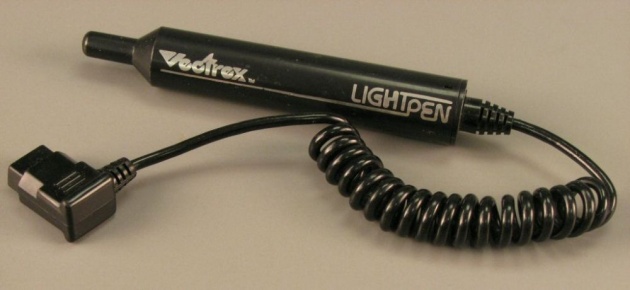A light pen is a computer input device in the form of a light-sensitive wand used in conjunction with a computer's CRT display.
It allows the user to point to displayed objects or draw on the screen in a similar way to a touchscreen but with greater positional accuracy. It was long thought[according to whom?] that a light pen can work with any CRT-based display, but not with LCDs (though Toshiba and Hitachi displayed a similar idea at the "Display 2006" show in Japan[1]) and other display technologies. However, in 2011 Fairlight Instrumentsreleased its Fairlight CMI-30A, which uses a 17" LCD monitor with light pen control.
A light pen detects a change of brightness of nearby screen pixels when scanned by cathode ray tube electron beam and communicates the timing of this event to the computer. Since a CRT scans the entire screen one pixel at a time, the computer can keep track of the expected time of scanning various locations on screen by the beam and infer the pen's position from the latest timestamp.



